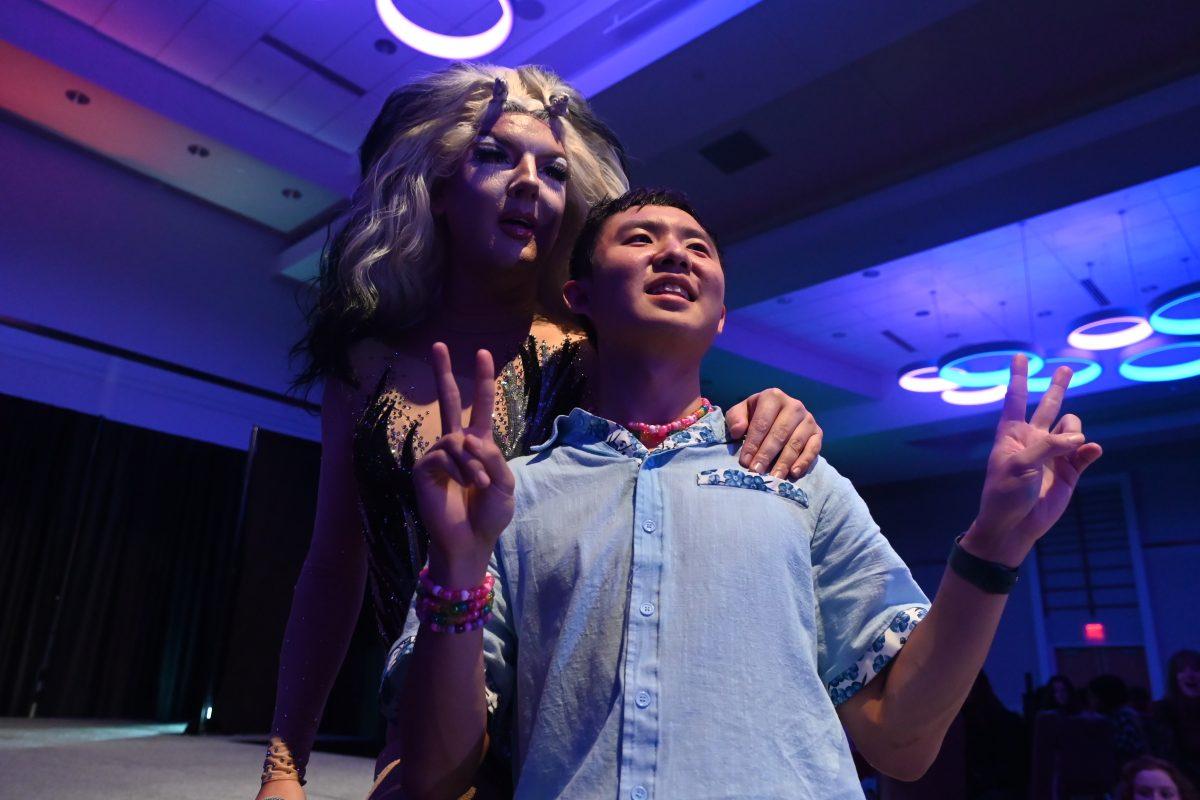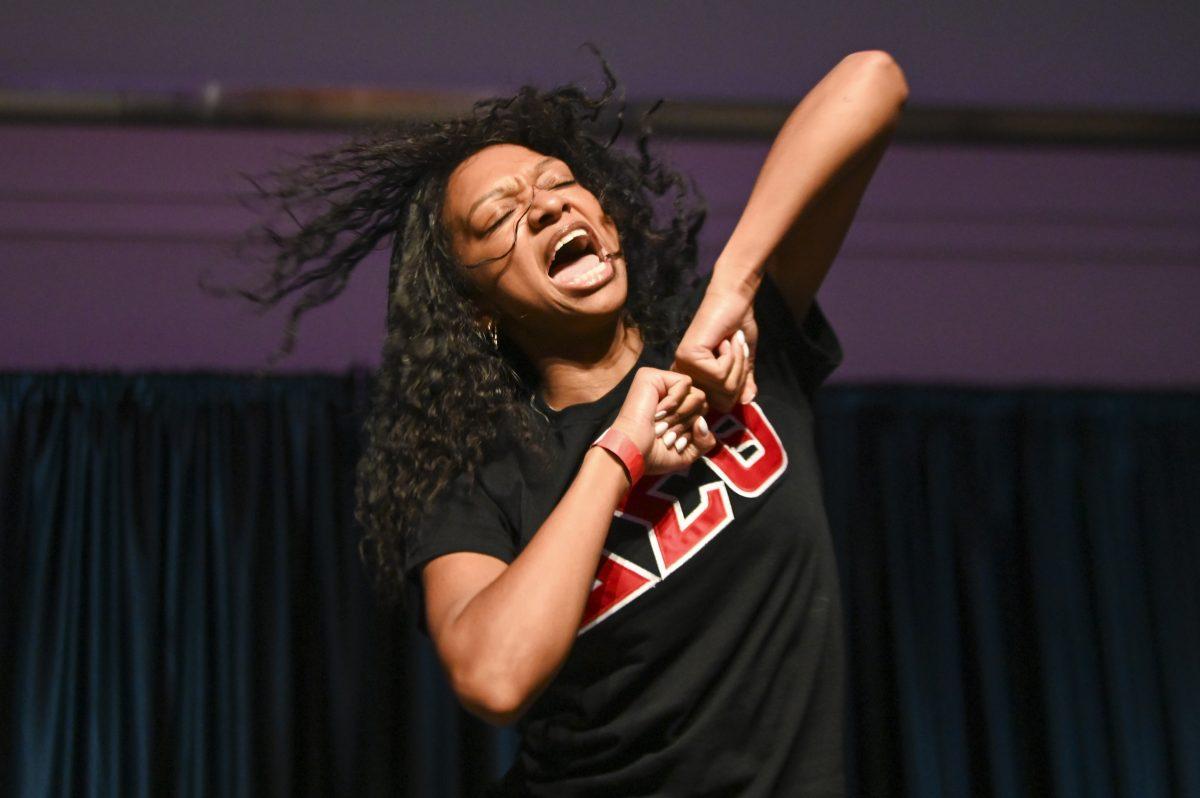Women are breaking national re cords by making up 57 percent of undergraduates, earning 60 percent of all masters degrees and earning 52 percent of all doctoral degrees, according to U.S. Education De partment statistics.
During the mid-1970s, girls’ educational underperformance was a consistent problem. However, by the 1990s, the concern changed from girls’ underperformance to boys’, which has become a cause for con cern for educators.
“Right now, there are slightly more females than males in college in general, especially in undergrad,” said Susan Bracken, adult education associate professor and program co ordinator. “The thing to know about that, though, is that just because there are more females overall, you still tend to see traditional group ings. For example, there are more males in engineering or in the sci ences and more females in liberal arts and in education.”
ACADEMIC ACHIEVEMENT AT N.C. STATE
As of now, N.C. State’s student population is 56 percent male and 44 percent female and, as Vice Chancellor Mike Mullen noted, those percentages make a unique gender achievement gap.
“In contrast to the national data, our gender gap for enrollment is dif ferent,” Mullen said. “We have more total men on campus than women. This is driven mostly by engineering enrollments, where about 81 percent of all engineering undergraduates are men,” he continued.
Males also appear to be succeed ing in academics. For instance, the data recorded from 2011 registra tion and records show that the re tention rate for males was 92.4 per cent, while the women’s retention rate was 91.5 percent.
However, women are more likely to graduate within four years. Fifty-two percent of women graduate on time, compared to 31 percent of men. Furthermore, of the students that don’t graduate in four years, 76 percent of women graduate in six years while only 69 percent of men do.
“The difference in the four year rate is very much affected by engi neering, which is male dominated and often takes more than four years to complete,” Mullen said. “However, women do indeed gradu ate at higher rates than men at N.C. State, which is in accordance with national data.”
Bracken provided an explanation for the difference of the gap between universities.
“When you study a school like N.C. State and look at the balance of the majors and colleges compared to other state schools you’ll probably start to see some slightly different patterns here because this is defi nitely a STEM focused school and that changes things a little bit when you look at these more national numbers,” Bracken said.
WHY DOES THE GAP EXIST?
Research suggests that the achievement gap begins as early as kindergarten, where girls start to outshine boys. Christopher Corn well, David Mustard and Jessica Van Parys, who wrote an article called, Non-cognitive Skills and the Gender Disparities in Test Scores and Teacher Assessments: Evidence from Primary School, concerning the academic performance of children in primary school, found that gender differ ences in elementary grades emerge early in all subject areas and favor girls in every subject.
According to New York Times opinion writer Christina Hoff Sommers, this immediate differ ence between genders could occur because the differences in attentive ness, persistence, eagerness to learn and the ability to sit still and work independently.
Sommers said in the article that girls typically develop these skills earlier than boys.
Mieke Van Houtte, a professor from Ghent University, wrote an article called, Why Boys Achieve Less at School than Girls: The Difference Between Boys’ and Girls’ Academic Culture, where she conducted a study about secondary education in which she explored the girls’ and boys’ adolescent culture as an ex planation for the achievement gap.
“It is demonstrated statistically that the effect of gender on achieve ment can be explained by the gen der-specific study cultures,” Van Houtte said.
For example, the boys’ culture is less study-oriented than the girls’ culture because academic achieve ment is less rewarded . In this case, males are deciding they want to fo cus on other things rather than their studies to maintain their images in line with their culture.
“Women tend to study abroad, volunteer in the community and spend longer hours preparing for class,” said Libby Sander, a writer for The Chronicle of Higher Educa tion. “Men spend more time playing video games, relaxing, and watching television.”
Men and women often have dis similar interests during college. Women tend to spend more time on school work and extracurricu lar activities, and men focus on in tramural sports and other relaxing activities. However, although this achievement gap between genders exists, men tend to spend more time interacting with faculty and work ing on research projects, according to Sander.
“Sometimes it’s interesting to know students’ attitude toward school,” Bracken said. “These re ports are based on national surveys of students and they are self-report ed, which is not necessarily saying it’s true. This might not actually be what they are doing, but it is what they say they are doing.”
THE GENDER GAP’S FUTURE
The impact of academic engage ment on students’ overall success tends to be stronger for men.
“Surprisingly, female professors were just as likely to favor a male candidate for a position as lab man ager when they were given identi cal applications with either male or female names,” said Katherine Mangan, a writer of The Chronicle of Higher Education. “The male stu dent was also offered a higher start ing salary and more mentoring.”
A national survey reported female graduate students tend to worry more than male graduate students about peoples’ perceptions of them, while males tend to worry more about money than females do.
“Female graduate students tend to report a perception of more in stitutional bias, or sexism,” Bracken said. “They report their experiences, and their perception is that it is not as friendly a place for women as it is for men. In the surveys, they report some of that bias coming from other women not just other men in terms of authority figures.”
Beyond the perception of sexism or bias in the workplace, there are factual numbers that report differ ences between males and females, according to The Chronicle of Higher Education.
“Even though more women are going to college at all ages, women earn about 82-85 cents on the dollar compared to men when they get one year out of college, so there is still a pay equity gap,” Bracken said. “In certain fields, that gap is not there because there are very tight controls over how someone is paid, particu larly at the entry level, but for the most part, they’re still showing right up until last year that this salary gap is still there.”
Along with the equity gaps, glass ceilings are a problem too, accord ing to Bracken.
“I would like to see more females at N.C. State and I would like to see more males persist and earn their degrees,” Mullen said. “There are reasons for the differences, but I would like to see men be more suc cessful. We also need for gradua tion rates of all students to increase. Once a student is at N.C. State, we want them all to get a degree and become part of the educated work force for N.C. and the country.”







